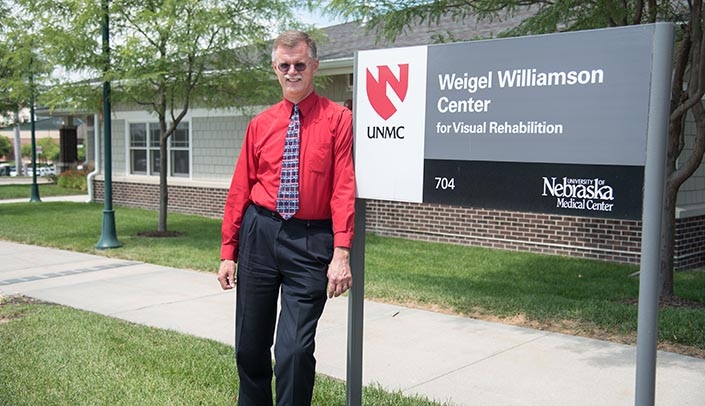Ten years has proven fruitful for the Weigel Williamson Center for Visual Rehabilitation at UNMC.
Open house
A campus open house will be held on Sept. 21 from 2 to 5 p.m. at the Weigel Williamson Center, 704 S. 38th Ave., with remarks by Dr. John Shepherd at 4 p.m. Light refreshments will be served.
In that time, more than 5,000 patients have received care at the only low vision house situated on an academic medical center campus.
Also, the Weigel Williamson Center has grown from one doctor and one occupational therapist at one location to multiple eye care providers and occupational therapists serving 600 patients a year in Omaha and at two satellite clinics in Nebraska and one in Iowa.
“It blows the mind,” said John Shepherd, M.D., director of the Weigel Williamson Center. “Ten years ago I was trying to develop something similar in Arizona but the true oasis was in Nebraska.”
Dr. Shepherd attributes the Weigel Williamson Center’s success to the support of former UNMC Chancellor, Harold M. Maurer, M.D., the University of Nebraska Foundation and the practitioners, staff and volunteers who are committed to providing the highest quality of care to the patients they serve.
Dr. Maurer, he said, supported the vision of UNMC staff members Gerald Christensen, M.D., Kathy VanDollen, R.N., and Pat Jones, R.N., to create a place where patients who had run out of surgical and other medical options could still maintain the highest quality of life possible in spite of their low vision.
That vision combined with the support of the NU Foundation, donors were identified who had the same desire to provide that kind of service.
Today patients who come to the Weigel Williamson Center receive the training and tools they need to learn how to use their remaining vision.
“The Weigel Williamson Center has become a model for other centers around the country that are looking to bring the same type of services to their patients,” Dr. Shepherd said. “I am very excited to see where we will be in another 10 years.”
